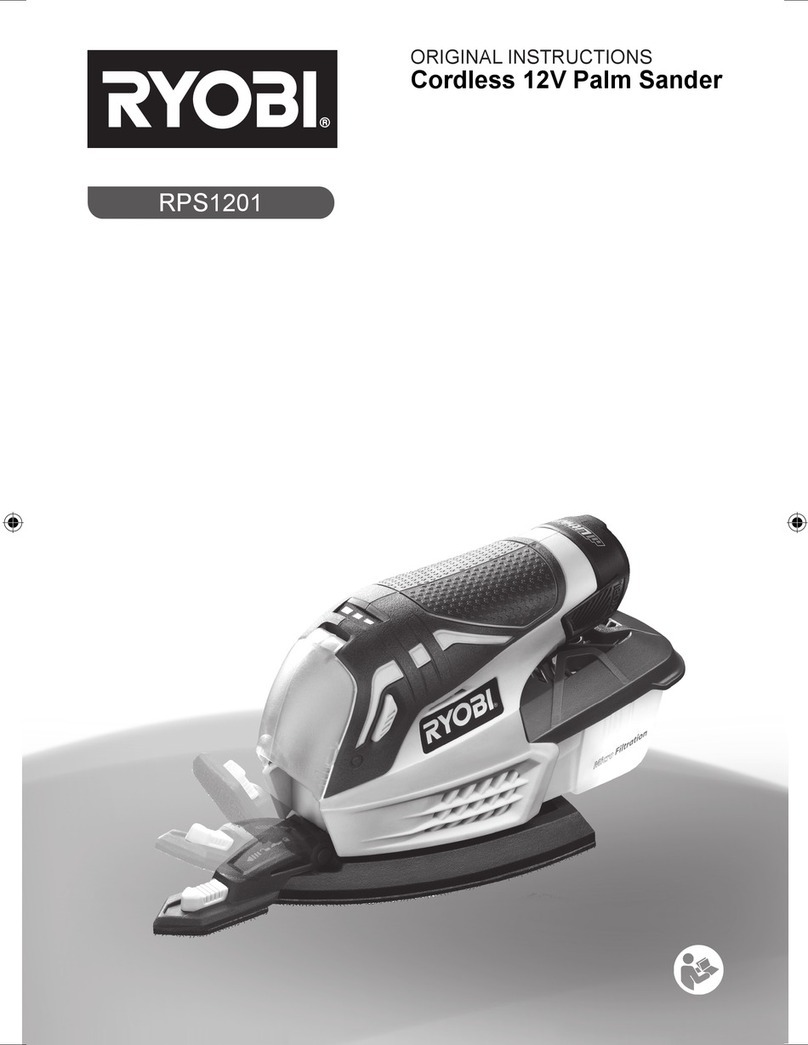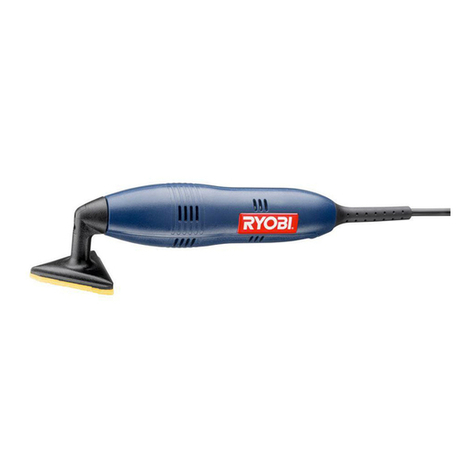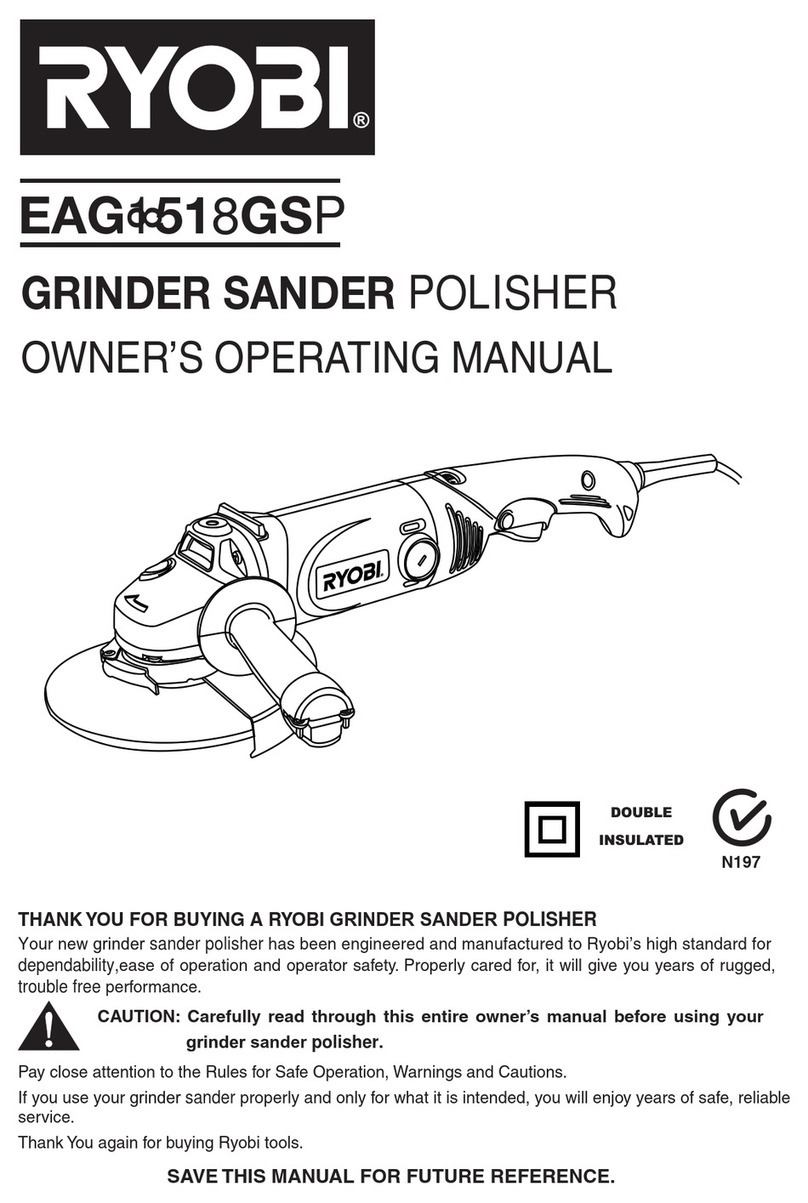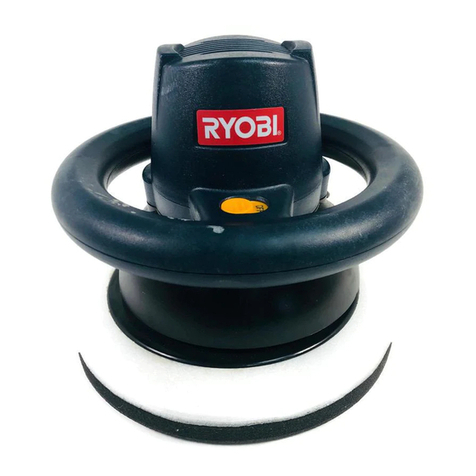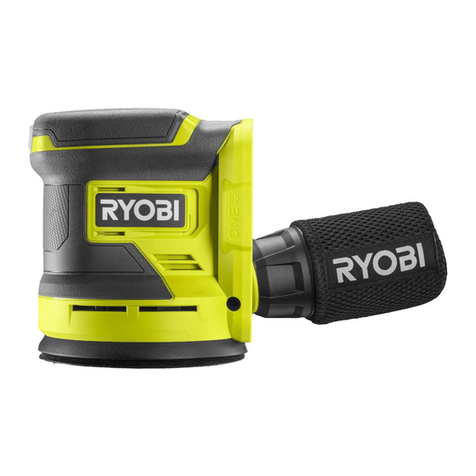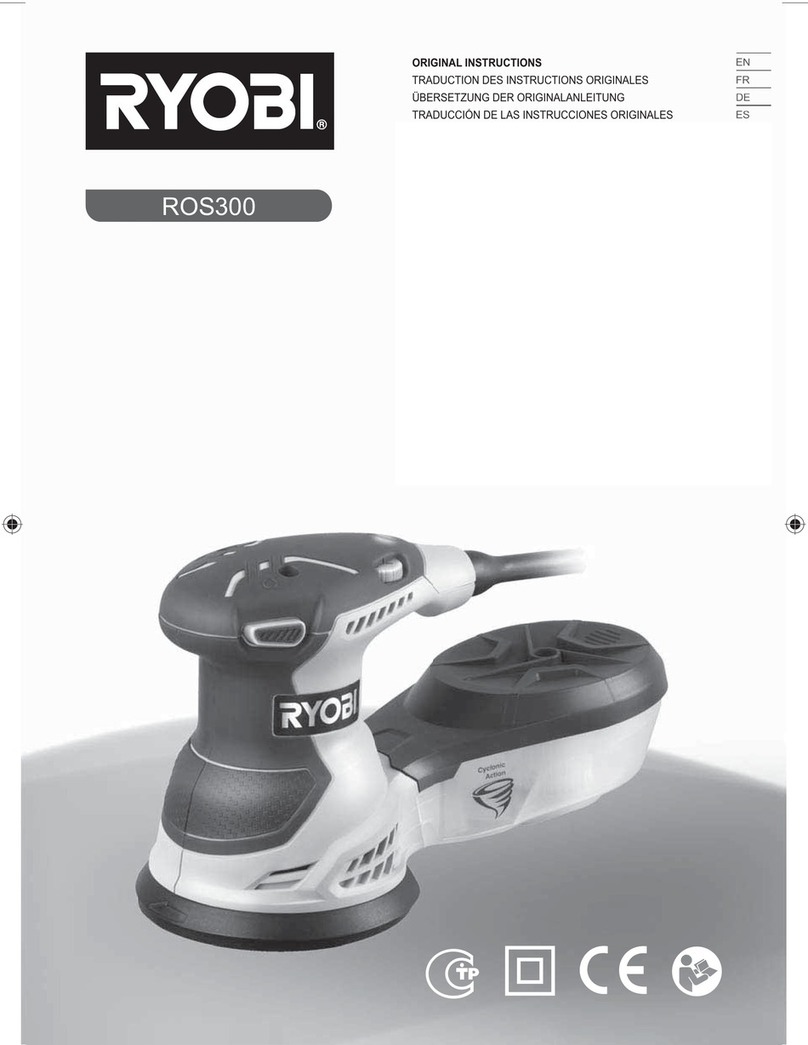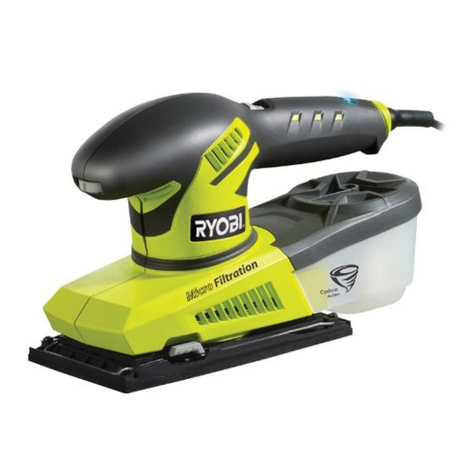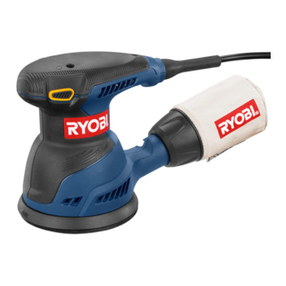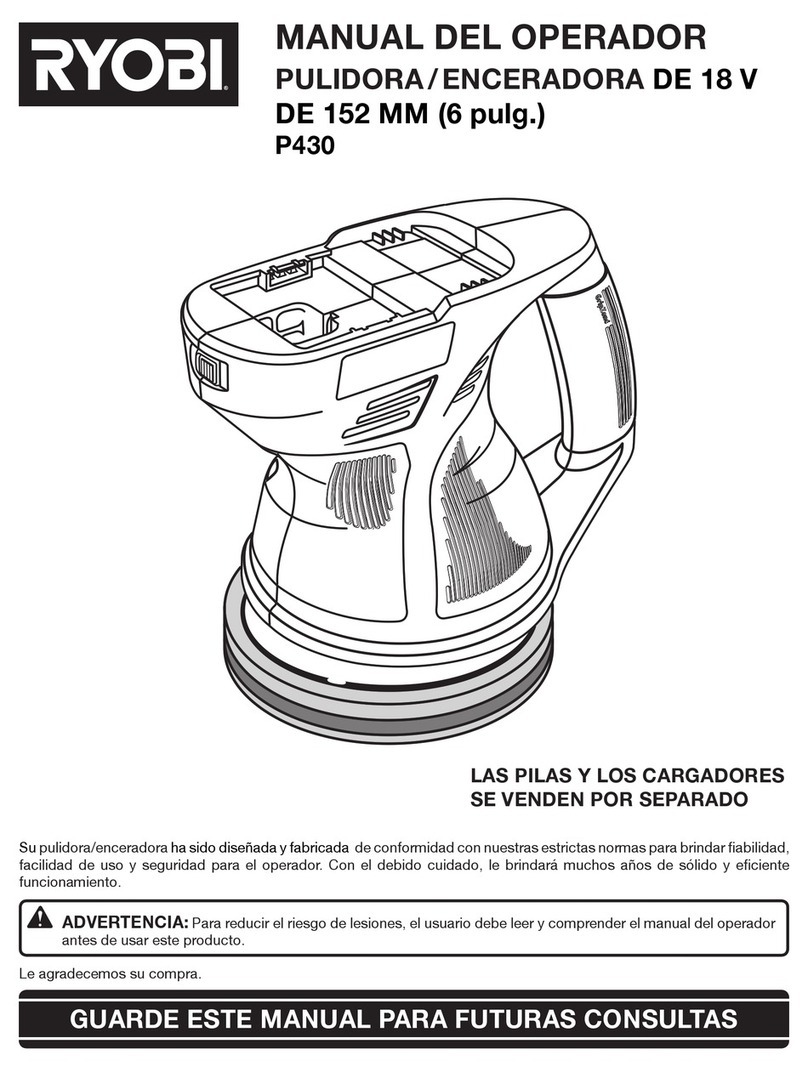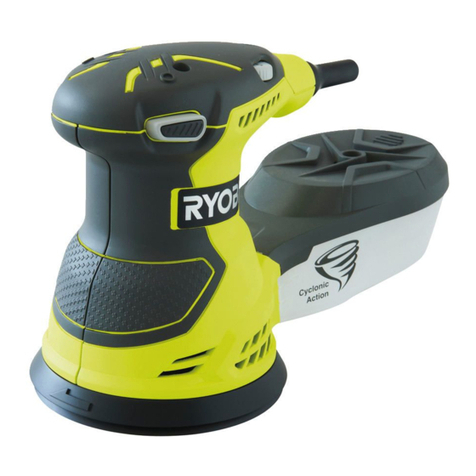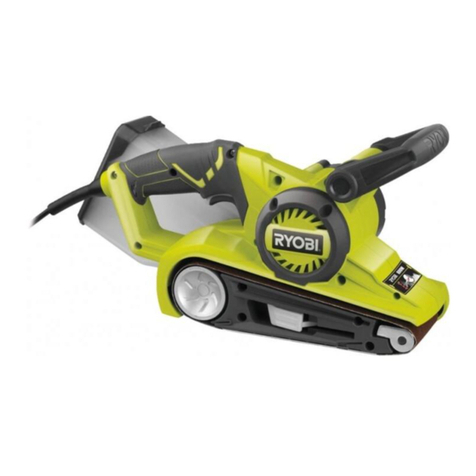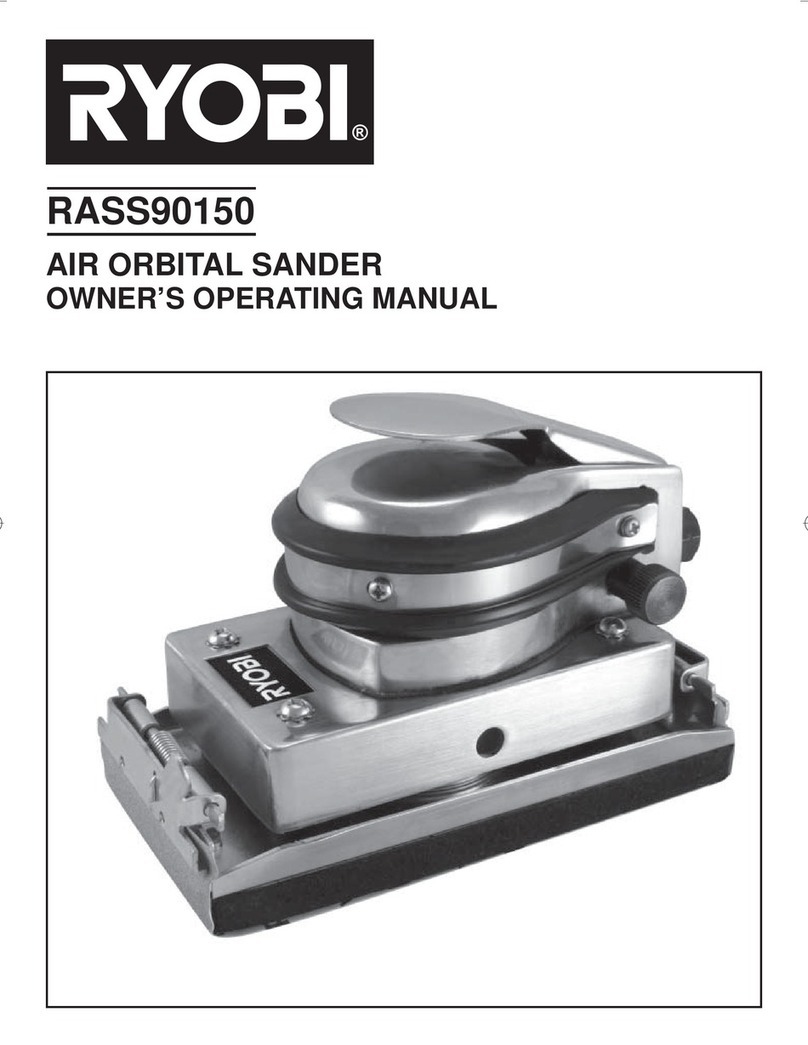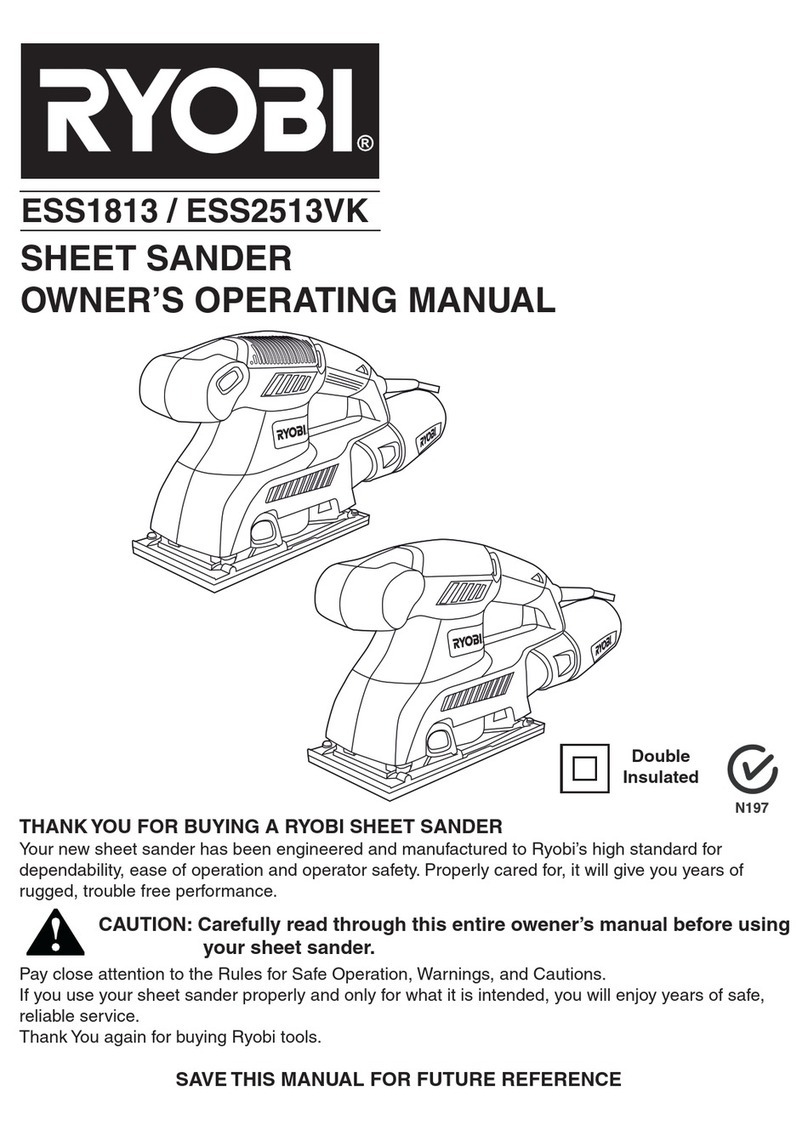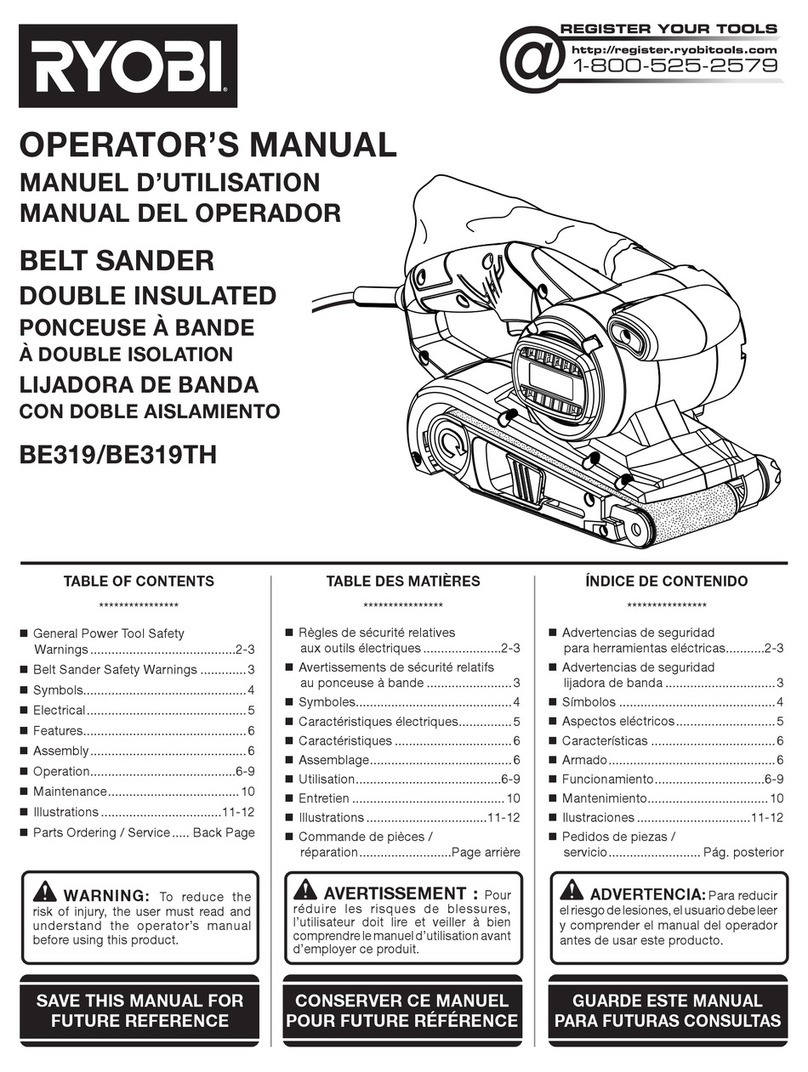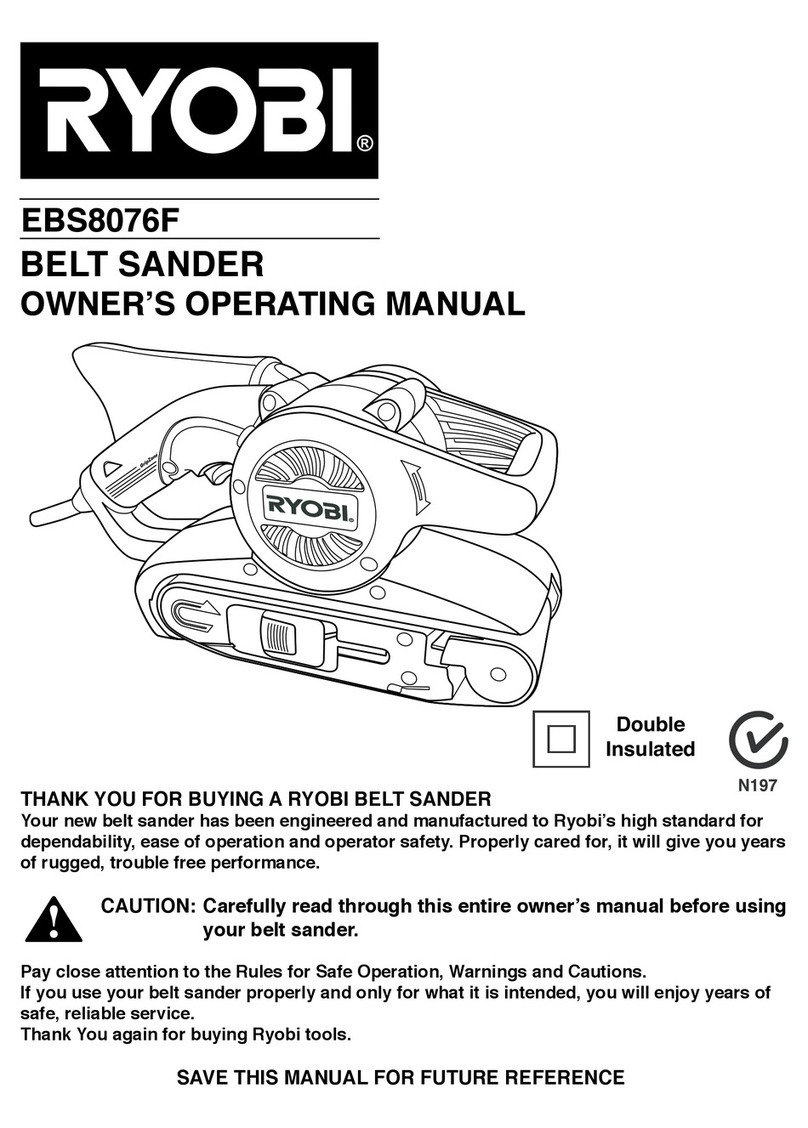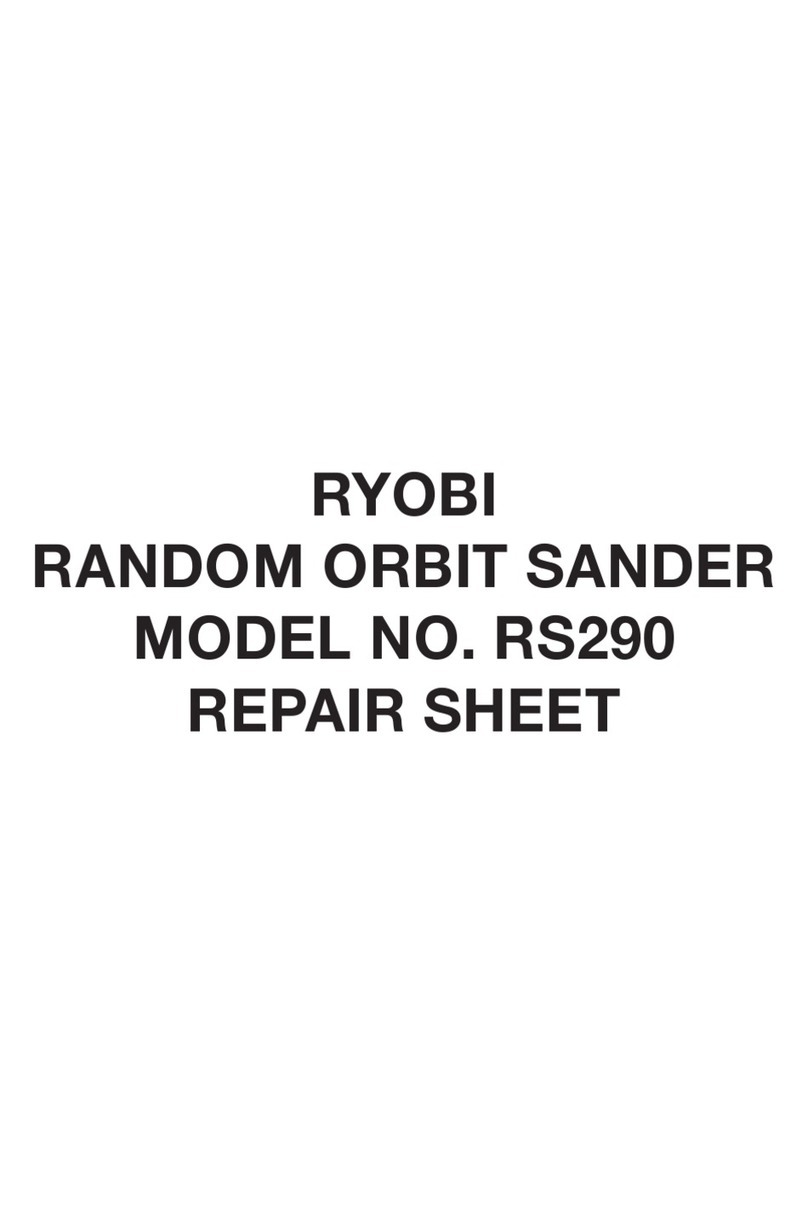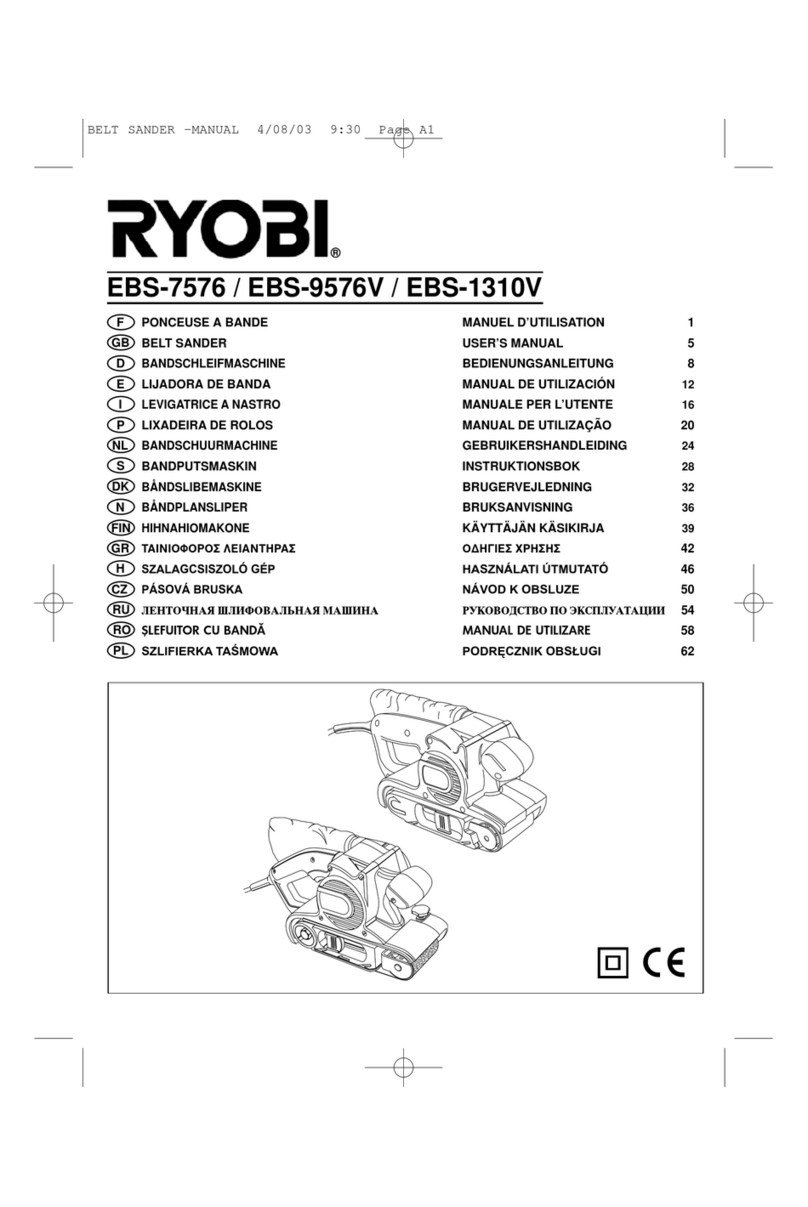
Page 3
RULES FOR SAFE OPERATION (Continued)
19. REMOVE ADJUSTING KEYS AND
WRENCHES. Form habit of checking to see
thatkeysandadjustingwrenchesareremoved
from tool before turning it on.
20. AVOIDACCIDENTALSTARTING. Don'tcarry
plugged-in tools with finger on switch. Be sure
switch is off when plugging in.
21. MAKESUREYOUREXTENSIONCORDISIN
GOODCONDITION.Whenusinganextension
cord,besureto useoneheavyenoughto carry
the current your product will draw. An under-
sized cord will cause a drop in line voltage
resulting in loss of power and overheating. A
wiregagesize(A.W.G.) ofatleast16is recom-
mended for an extension cord 100 feet or less
in length. A cord exceeding 100 feet is not
recommended.Ifindoubt,usethenextheavier
gage.Thesmallerthegagenumber,theheavier
the cord.
22 OUTDOORUSEEXTENSIONCORDS. When
toolisusedoutdoors, use onlyextensioncords
suitable for use outdoors. Outdoor approved
cords are marked with the suffix W-A, for ex-
ample - SJTW-A or SJOW-A.
23. NEVERUSETHISORANYPOWERSANDER
FOR WET SANDING OR LIQUID POLISH-
ING. Failure to comply can result in electrical
shock causing serious injury or worse.
24. KEEPHANDSAWAYFROMSANDINGAREA.
25. NEVER USE IN AN EXPLOSIVE ATMO-
SPHERE. Normal sparking of the motor could
ignite fumes.
26. INSPECTTOOLCORDSPERIODICALLYand
if damaged, have repaired by an authorized
service center. Stay constantly aware of cord
location.
27. INSPECT EXTENSION CORDS PERIODI-
CALLY and replace if damaged.
28. KEEP HANDLES DRY, CLEAN, AND FREE
FROMOILANDGREASE. Alwaysuseaclean
cloth when cleaning. Never use brake fluids,
gasoline,petroleum-basedproductsorsolvents
to clean your tool.
29. STAY ALERT. Watch what you are doing and
use common sense. Do not operate tool when
you are tired. Do not rush.
30. CHECK DAMAGED PARTS. Before further
use of the tool, a guard or other part that is
damagedshouldbecarefullycheckedtodeter-
minethatitwilloperateproperlyandperformits
intendedfunction.Checkforalignmentofmov-
ing parts, binding of moving parts, breakage of
parts, mounting, and any other conditions that
may affect its operation. A guard or other part
thatisdamagedshould be properly repaired or
replaced by an authorized service center.
31. DO NOT USE TOOL IF SWITCH DOES NOT
TURNITONANDOFF.Havedefectiveswitches
replaced by an authorized service center.
32. Inspect for and remove all nails from lumber
before sanding.
33. DRUGS, ALCOHOL, MEDICATION. Do not
operatetoolwhileunder the influenceofdrugs,
alcohol, or any medication.
34. When servicing use only identical Ryobi
replacement parts.
35. POLARIZED PLUGS. To reduce the risk of
electric shock, this equipment has a polarized
plug (one blade is wider than the other). This
plug will fit in a polarized outlet only one way. If
the plug does not fit fully in the outlet, reverse
theplug. Ifitstilldoesnotfit,contactaqualified
electrician to install the proper outlet. Do not
change the plug in any way.
36. SAVETHESEINSTRUCTIONS. Refertothem
frequently and use them to instruct others who
mayusethistool. Ifyouloansomeonethistool,
loan them these instructions also.
WARNING:
Some dust created by power sanding, sawing,
grinding, drilling, and other construction activities
contains chemicals known to cause cancer, birth
defects or other reproductive harm. Some ex-
amples of these chemicals are:
•lead from lead-based paints,
•crystalline silica from bricks and cement and
other masonry products, and
•arsenic and chromium from chemically-treated
lumber.
Your risk from these exposures varies, depend-
ing on how often you do this type of work. To re-
duce your exposure to these chemicals: work in
a well ventilated area, and work with approved
safety equipment, such as those dust masks that
are specially designed to filter out microscopic
particles.
